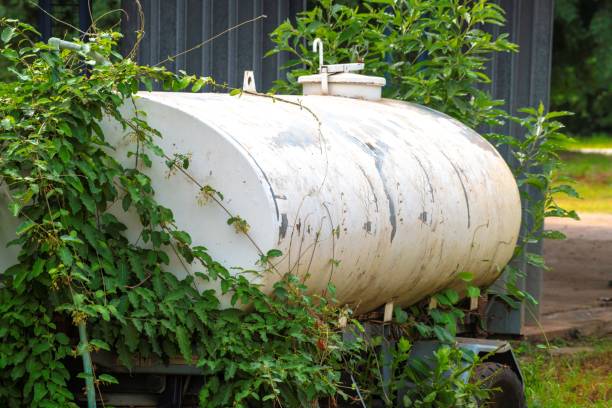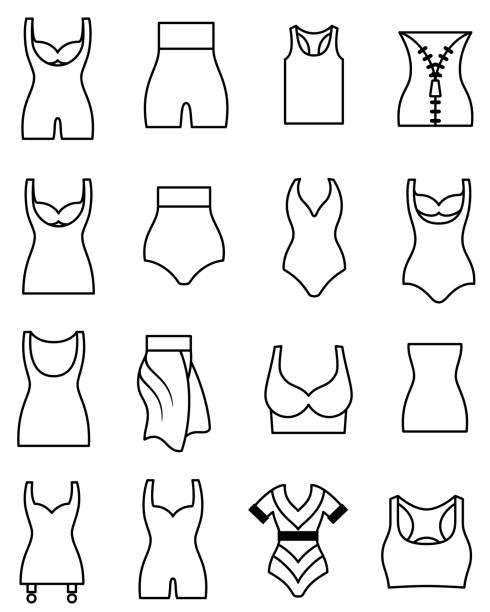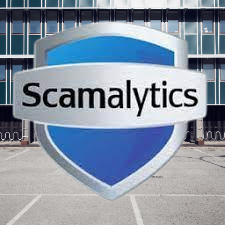Blog
Safeguarding the Digital Realm: Navigating DoS and DDoS Attacks

Key Takeaways:
- Understanding the fundamental differences between DoS and DDoS attacks is crucial for creating effective defense strategies.
- Implementing a multi-layered security approach can significantly reduce the risks associated with these attacks.
- Consistent monitoring and analyzing network traffic are essential in detecting and mitigating attack attempts early.
Table of Contents:
- Introduction
- Understanding DoS and DDoS Attacks
- Detecting Attacks: Early Warning Signs
- Effective Defense Strategies
- The Role of Monitoring Systems
- Building Resilience in Your Network
- Conclusion
Introduction
The onset of the digital era has transformed how businesses, governmental institutions, and individuals operate, with the internet serving as a backbone for myriad processes. In this interconnected world, cybersecurity is paramount, and the threats posed by cyberattacks like Denial of Service (DoS) and Distributed Denial of Service (DDoS) attacks have surged significantly. These attacks target the availability of networks and services, making them a principal concern for maintaining continual operational hygiene. With cyber threats becoming more elaborate, understanding and implementing measures to protect against DoS and DDoS attacks is prudent and essential for safeguarding digital environments.
Understanding DoS and DDoS Attacks
DoS and Distributed Denial of Service (DDoS) attacks are malicious attempts to disrupt the normal functioning of a targeted server, service, or network by overwhelming it with a flood of internet traffic—the primary distinction between the two lies in their execution. DoS attacks originate from a single source and focus on flooding a target with excessive requests until it can no longer handle legitimate traffic. On the other hand, DDoS attacks magnify this tactic by employing multiple systems, forming a coordinated onslaught that makes them much more challenging to mitigate. This complex approach involves using a network of infected computers, or bots, to execute the attack, distributing the load across several points to overload the system effectively.
Detecting Attacks: Early Warning Signs
Timely detection of DoS and DDoS attacks is critical to neutralizing their potential damage. While these attacks might initially appear as abnormal increases in traffic or server requests, they can quickly escalate to service outages or severe slowdowns if not addressed promptly. Key warning signs include unusually high traffic from a single IP address or range of IP addresses, unexplained spikes in network traffic, and the appearance of traffic patterns that seem unnatural and sustained over lengthy periods. Additionally, a DoS attack might be underway if a server repeatedly crashes or slows down despite upgrades and optimization. These indicators necessitate constant vigilance and the application of advanced analytics tools that can distinguish regular operational fluctuations from malicious activity.
Effective Defense Strategies
Developing a comprehensive defense against DoS and DDoS attacks involves multiple layers of security protocols designed to absorb, redirect, and minimize the impact of incoming threats. One effective method is the utilization of sophisticated firewalls that can filter and block suspicious traffic while allowing legitimate requests to pass through. Intrusion detection and prevention systems play an essential role by monitoring network traffic for predefined threat signatures and alerting administrators to potential attacks in progress. Another critical component is the implementation of rate limiting, which regulates the number of requests a server can handle from a single entity within a given timeframe, thereby preventing overwhelming loads. Collaborating with cloud-based security services provides additional advantages by leveraging vast networks to dissipate excessive traffic through distributed networks, thus avoiding localized disruptions.
The Role of Monitoring Systems
Continuous monitoring systems represent a foundational aspect of effective defense against cyberattacks. They apply advanced algorithms to scrutinize network flows and detect deviations from typical traffic patterns. By identifying these anomalies early, monitoring systems offer the first line of defense in preempting potential DoS or DDoS activities. Such systems can visualize real-time network health and trigger alerts when suspicious behavior is detected. Advanced monitoring tools also enable security personnel to trace back and assess the nature of the traffic, distinguishing between routine spikes and possible threats. Furthermore, these systems contribute to developing predictive analytics that helps foresee and thwart future attacks, granting organizations the foresight required to bolster their defenses accordingly.
Continuous monitoring systems also facilitate compliance with cybersecurity regulations by maintaining detailed logs and records of network activity. These logs can be crucial during audits or forensic investigations, providing a clear trail of evidence to analyze incidents. Moreover, they integrate seamlessly with other security frameworks, such as intrusion detection systems and firewalls, to create a multi-layered defense strategy. By leveraging machine learning, these systems can continuously improve their detection accuracy, adapting to emerging threats in real time. Additionally, the insights gained from monitoring systems can inform strategic decisions, such as optimizing resource allocation or prioritizing security investments, ensuring an organization’s defenses evolve alongside the threat landscape.
Building Resilience in Your Network
Network resilience is not merely about defense but creating an adaptable infrastructure capable of withstanding and adjusting to threats without succumbing to them. This goal is achieved through several strategies. Network segmentation is a pivotal initiative that isolates critical sections of a network, thereby containing any potential breaches within specified areas and preventing the threat from affecting the entire network.
Moreover, organizations should invest in redundancy by establishing backup systems that can take over when the primary system fails, ensuring business continuity. Regularly updating software and patching vulnerabilities reduces exploitable weaknesses that attackers might leverage. Investing in bandwidth management technologies that automatically adjust to demand fluctuations ensures smoother operational continuity and mitigates the impact of sudden traffic surges. Such resilience strategies are paramount in maintaining digital infrastructures’ long-term health and security.
Conclusion
In an era where cyber threats continually evolve, the need to understand and implement comprehensive defenses against DoS and DDoS attacks must be addressed. As these attacks become more sophisticated, so must the countermeasures to thwart them.
A proactive approach, incorporating advanced monitoring systems, structured defense strategies, and resilience-building measures, will protect businesses from interruptions and safeguard a brand’s reputation and stakeholder trust. By investing in robust cybersecurity frameworks and staying abreast of emerging threats, organizations can remain one step ahead in maintaining operational continuity and engaging safely within the digital realm.
Blog
Signs It’s Time to Replace Your Oil Tank: A Comprehensive Guide

Understanding Oil Tank Lifespan
Oil tanks are an integral component of many heating systems in homes, providing warmth and comfort during cold seasons. Typically, these tanks have a lifespan of 15 to 20 years, which can be influenced by material quality, the environment they are exposed to, and how well they are maintained. For example, tanks made from fiberglass may last longer than those constructed from steel, particularly if located in a humid area prone to rust.
Regular maintenance is crucial to prolong a tank’s lifespan; this includes routine inspections for any signs of wear or damage. With proper care, a well-maintained tank can indeed reach its maximum life expectancy. If you find your oil tank is approaching this age bracket, it might be a wise decision to start considering oil tank services Cornwall on Hudson NY, to help guide you through a smooth replacement process.
Common Indicators of Oil Tank Failure
Detecting the early signs of a failing oil tank can save homeowners from significant stress and expense. Unusual odors often signal a leak or spillage, indicating potential oil tank failure. Rust, corrosion, and discoloration also suggest compromised structural integrity. These imperfections can occur from constant exposure to weather elements or due to interactions with the oil stored inside the tank.
Moisture accumulation around the base of the tank or unexplained puddles could indicate leaks. Monitoring these signs carefully is crucial as they can lead to severe problems if not addressed promptly. Repairing a small leak is significantly easier and less expensive than managing widespread soil contamination, which can occur when problems are ignored.
Potential Risks of Delaying Replacement
Procrastinating on replacing a worn-out oil tank can result in dire consequences. A delay can lead to leaks that contaminate soil and groundwater, posing environmental hazards and potential health risks for the community. In such scenarios, homeowners may face cleanup costs, which can be exorbitant, but they might also deal with legal fees and fines imposed by governmental bodies for non-compliance with environmental regulations.
The costs of rectifying environmental damage far outweigh those associated with timely tank replacement. Moreover, replacing an oil tank on time ensures that heating systems will remain reliable when they are needed most, providing peace of mind to homeowners.
Advantages of New Oil Tank Models
The innovations embedded in contemporary oil tank models have made significant strides in improving both performance and safety. Manufacturers often use advanced, corrosion-resistant materials like polyethylene or fiberglass to build newer oil tanks, replacing traditional steel. These materials are not only more durable but also lighter, easing the installation process.
Modern tanks also come equipped with safety features, such as leak detection systems and improved valves, which help prevent accidents. Additionally, these tanks can offer higher energy efficiency, translating to possible reductions in heating costs over time. The advantages of upgrading to a newer model extend beyond just financial savings; they contribute to family safety and environmental responsibility.
Environmental and Safety Considerations
When considering an oil tank replacement, it is essential to evaluate environmental impacts and safety standards. Upgraded tanks are designed to comply with stringent environmental regulations, which aim to minimize harm. Following the EPA guidelines on heating oil tanks ensures that installations meet necessary standards, reducing the risk of costly penalties and environmental degradation.
Prioritizing tasks that align with these guidelines secures compliance and promotes long-term sustainability. Opting for environmentally friendly options helps safeguard natural resources and contributes to reducing the carbon footprint.
Choosing the Right Tank for Your Needs
One of the most pivotal decisions in replacing an oil tank involves selecting the appropriate model that meets specific residential needs. Homeowners must deliberate on the tank’s size by examining their oil consumption patterns. A correctly sized tank ensures efficient heating without unnecessary energy waste, which can add up financially over time.
The choice between an above-ground or below-ground tank is another critical consideration. While above-ground tanks are generally more accessible for maintenance and less expensive to install, below-ground models can save space and offer discrete storage. Evaluating these factors based on personal priorities and local zoning regulations is essential in the decision-making process.
Financial Aspects of Oil Tank Replacement
Understanding the financial commitment involved in oil tank replacement can prepare homeowners for the investment and potential savings. While initial expenses might seem significant, the long-term financial benefits from improved efficiency and reduced risk of leaks often justify these costs.
Many insurance companies acknowledge the lower risk associated with new oil tanks, which can lead to reduced premiums for homeowners. It’s worthwhile to inquire about these potential savings when planning for a tank upgrade. Additionally, newer, more efficient tanks might also translate into lower heating bills, contributing further to long-term cost benefits.
When and How to Contact a Professional
Once you observe any warning signs of potential oil tank failure or if your tank is approaching the end of its expected lifespan, it’s time to seek professional consultation. Hiring certified professionals ensures correct replacement and full compliance with safety standards. Their expertise guarantees peace of mind and quality results.
Qualified professionals have the expertise to assess the condition of your current tank accurately and make informed recommendations on suitable replacements, installation methods, and maintenance plans, providing comprehensive support throughout the process.
Blog
It Isn’t Scary: Getting Started with Horse Jumps

Introduction to Horse Jumps
Horse jumping is an exhilarating and challenging sport that many equestrians aspire to master. For newcomers, however, the idea of tackling horse jumps can seem intimidating. Yet, getting started is not as scary as it seems. With the right guidance, preparation, and practice, newcomers can achieve remarkable skill levels. Understanding the various aspects of horse jumping, from safety to technique, is crucial for building a solid foundation. Moreover, exploring a variety of horse jumps and their features can be an exciting part of the learning process, providing insights into what to expect and how to prepare for different jumping scenarios.
Essential Equipment for Beginners
Before approaching your first jump, it’s essential to have the right equipment. Safety is paramount, and investing in quality protective gear is non-negotiable. A well-fitted helmet is crucial to protect against falls and injuries, offering peace of mind to both rider and horse. Proper footwear, specifically riding boots, ensures superior grip and stability in the stirrups, which is vital during jumps. The right boots also protect against friction and offer support, which can prevent injuries. Equally vital is a well-fitted saddle, which provides the comfort and control necessary for both rider and horse. A stable saddle lessens the risk of accidents by allowing riders to maintain better balance during jumps, thereby enhancing performance and safety.
Understanding Different Types of Horse Jumps
Horse jumps come in various forms, each designed to test different skills and challenge both horse and rider in unique ways. Beginners should familiarize themselves with common types, such as verticals, oxers, and triple bars, to build a foundational understanding. Verticals are single, straight bars that require precision and control, demanding the horse to make a clean, sharp leap. Oxers include two or more parallel rails, necessitating a longer jump and requiring more effort and coordination from the horse. Triple bars, on the other hand, consist of three rails placed at different heights, presenting a complex challenge that tests the horse’s ability to stretch and the rider’s timing in the jump. Learning the nuances of each type can significantly enhance both a rider’s confidence and performance.
Staying informed about the latest trends and practices in horse jumping is also invaluable. Resources like the United States Equestrian Federation’s website offer updates and insights that can provide both novices and experts with useful knowledge. By keeping abreast of innovations and techniques, riders can adapt and improve their skills, ensuring they are always progressing and keeping their training fresh and exciting.
Training Techniques for Success
Successful horse jumping requires consistent training and a well-structured approach to practice. Beginners should adopt a gradual approach, starting with smaller jumps that build foundational skills without overwhelming the horse or rider. This method helps build confidence and allows riders to develop skills gradually, reducing the risk of accidents caused by attempting too much too soon. Regular practice is crucial; it reinforces techniques and strengthens the bond between horse and rider, fostering mutual trust and understanding, which are essential in overcoming challenges. Equally important is the feedback from experienced coaches, who can offer constructive advice to correct mistakes and enhance performance, ensuring that each session brings valuable insights and improvements.
Training Steps for Beginners
- Start Small: Begin with ground poles and low cross-rails to focus on technique, allowing riders to get comfortable with the idea of jumping without the pressure of height.
- Build Consistency: Establish a routine practice schedule to ensure steady progress, helping to build muscle memory and increase skill levels naturally over time.
- Incorporate Feedback: Take lessons and heed advice from more experienced riders or trainers, using their insights to hone techniques and address any areas of difficulty with expert guidance.
Setting Achievable Goals
Setting small, achievable goals is vital to maintaining motivation in horse jumping. Begin with goals that are manageable and build towards more challenging objectives over time, ensuring that progress is steady and realistic. Celebrating small victories along the way can spark momentum and sustain enthusiasm, providing positive reinforcement that encourages continued effort. Whether it’s successfully completing a particular jump, mastering a specific technique, or simply building confidence, acknowledging these achievements is key to a fulfilling journey in horse jumping. Such an approach transforms challenges into stepping stones toward greater accomplishments.
Conclusion: Embracing the Journey
Ultimately, horse jumping is about enjoying the journey as much as the destination. With patience, the right support, and a positive attitude, anyone can learn to jump with confidence and joy. Embrace each step of the journey, from the early days of trepidation to the rewards of skill and mastery. The path to becoming a proficient jumper is a testament to the rider’s dedication and the horse’s trust, beautifully woven together in this captivating sport. It is a journey defined by perseverance, growth, and the joys of shared success, making even the smallest accomplishments worthy of celebration.
Blog
Discover Confidence with Shapellx: Elevate Your Silhouette

In today’s fashion-forward world, achieving a seamless and confident look is paramount. Shapellx stands at the forefront, offering innovative shapewear solutions that blend comfort with style. Whether you’re seeking a bodysuit with tummy control, an underwire push-up bra, or the best shapewear for tummy, Shapellx has you covered.
Sculpt Your Silhouette: Bodysuit with Tummy Control
The bodysuit with tummy control is a testament to Shapellx’s commitment to quality and functionality. Designed to provide a sleek, mid-thigh contour, this bodysuit not only flattens your tummy but also lifts your chest and buttocks for an all-over flattering shape. The mesh material ensures breathability and comfort, making it ideal for wearing throughout the day. Embrace your curves with confidence as this shapewear smooths your thighs and delivers the ideal airflow for that comfortable shaping experience.
Elevate Your Confidence: Underwire Push-Up Bra
Complement your shapewear with the underwire push-up bra, meticulously crafted to offer both support and elegance. This bra features supportive underwire cups for extra support, flexible side boning to ensure reliable support that stays in place, and adjustable straps for a personalized fit. The high-coverage design in the underarms and back provides a smoothed-out look, while the soft cups lined in light foam ensure all-day comfort. It’s the perfect blend of functionality and style.
Achieve the Best: Best Shapewear for Tummy
For those seeking the pinnacle of tummy control, the best shapewear for tummy truly stands out. To begin with, this full-body shaper is expertly designed to deliver a slim and controlled look with minimal effort. Moreover, it features a convenient bodysuit panty style, along with an inner hook and zipper design for added security and ease. Additionally, the open bust design allows you to wear it with your favorite bra, ensuring versatility in your wardrobe. In contrast, the open crotch design ensures hassle-free bathroom access, making it especially practical for daily use. Furthermore, its butt-lifting feature fully wraps and enhances the hips, resulting in a beautifully sculpted silhouette. Lastly, with flexible shoulder straps and anti-allergic fabric, this shapewear remains both comfortable and confidence-boosting throughout the day.
Why Choose Shapellx?
Shapellx is more than just a brand; it’s a movement toward embracing one’s natural beauty with a little enhancement. Each product is thoughtfully designed, ensuring that you don’t have to compromise on comfort to achieve the look you desire. With a range of sizes and styles, Shapellx caters to diverse body types, ensuring everyone finds their perfect fit.
-

 Blog2 months ago
Blog2 months ago鲁Q 669FD: Understanding Vehicle Registration in China
-
Tech5 months ago
IPv6 Internet Is Broken
-

 Blog3 months ago
Blog3 months agoSwatapp.me المانجا: Your Gateway to the World of Manga
-

 Tech1 month ago
Tech1 month agoWepbound: The Future of Web Development
-

 Business2 months ago
Business2 months agoUnveiling adsy.pw/hb3: Revolutionizing Content Marketing Strategies
-

 Tech5 months ago
Tech5 months agoScamalytics: Revolutionizing Scam Detection in the Digital Age
-

 Tech5 months ago
Tech5 months agoWebmxhd: Revolutionizing Digital Connectivity
-

 Business1 month ago
Business1 month agoadsy.pw/hb5: Comprehensive Guide to Online Success Strategies
